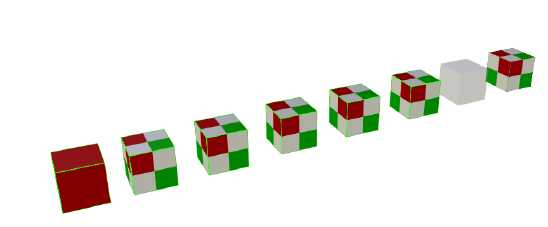Merge / Union
To be able to process a 3D construction as an entity, we as a rule need not only to be able to trim solids but also to merge or unify them. The difference between these two operations is shown in the following illustration. On the left the result of the ‘Merge’ function, on the right the result of the ‘Union’ function:

To put it simply, both solids remain unchanged when they are merged and only form an entity for further processing, whereas when solids are unified the parts and surfaces which are common to both solids are removed.
The following is a general rule for our 3D modelling functions:
· Solids, which do not penetrate each other, must be merged.
· Solids, which penetrate each other, must be unified.
As we can see, the illustration above is not quite correct and only serves to demonstrate the operations.
When one the two functions is activated, the software attempts to establish which of the two operations is best suited for the particular case and then performs internally the function which it has determined. It can therefore happen that the ‘Merge’ function was selected but internally the solids are processed with the ‘Union’ function. This may not always be correct, as for performance reasons the function is determined based on the bounding box of the objects. If this results in incorrect processing then the type of operation should be changed in the ‘3D construction’ dialog.

Multiple 3D constructions can be merged in one operation by keeping the ‘Shift’ key pressed during selection. The solids which have been selected for the operation are outlined in green. The operation is completed by pressing ‘Enter’
